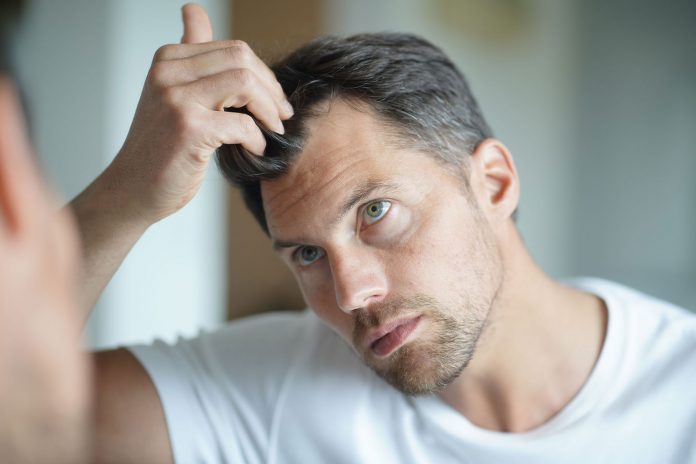Hair loss is an annoying issue that many people suffer from, and it has a variety of causes. If it becomes severe, it can lead to balding. This balding can happen on the scalp or anywhere else on the body, and can either be permanent or temporary. Normally, individuals lose about 100 strands of hair a day, and regrow it at a rate that maintains hair thickness. Problems occur when hair is being lost more quickly, or when new hair isn’t regrowing from the follicles.
Signs of hair loss often include the following:
1. Thinning hair
Many individuals, especially men, suffer from this type of balding. For men, the hair often recedes from the forehead, and begins to thin on the crown of the head. Women don’t experience a receding hairline as often, but may notice their hair is thinner and more prone to damage.
2. Bald spots
Sometimes, balding takes the form of small round bald spots. This mainly occurs on the scalp, but it can also affect the bear or eyebrows. Individuals may also experience itchy or irritated skin in the balding areas.
3. Hair loss throughout the body
Hair loss throughout the body can occur due to health conditions and medical treatments like chemotherapy. The hair usually grows back in such cases.
4. Scaling
Scaling on the scalp can be caused by allergic reactions or irritation caused by certain products. There may also be swelling, redness, and itchiness in these areas, contributing to hair loss.
Causes of baldness in both men and women patients may include:
- Heredity: If hair loss runs in the family it can be more common for individuals to experience it. This type of hair loss increases with age, and is often predictable based on the hair loss of parents or grandparents.
- Change in hormones: There are various medical conditions that cause hormonal problems that can lead to hair loss. Conditions like menopause, pregnancy, and thyroid cause changes in hormones that lead to temporary or permanent loss of hair. Stress levels can also largely impact hair health.
- Medical conditions or treatments: Those with conditions like alopecia areata, or certain infections or illness, can experience hair loss. Medications and therapies used to treat other problems can also have hair loss as a side effect. For example, radiation therapy for cancer can result in hair loss.
- Certain hairstyles and hair treatments: There are some hairstyles that involve pulling on the hair tightly, such as ponytails or braids, which can cause a condition known as traction alopecia. Extreme hair treatments such as bleaching or relaxing hair can also lead to irritated hair follicles, contributing to hair loss. In some cases, the scalp might be scarred, meaning hair loss can be permanent.


